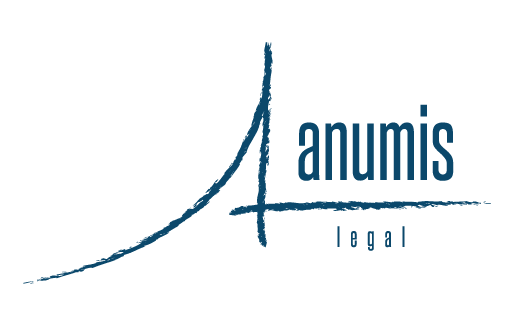What is Superannuation Splitting & why is it important?
When a marriage or de facto relationship breaks down superannuation splitting is particularly important as it is often a large asset of one or both of the parties to the relationship. Most superannuation interests can be split. However, generally any interest that has a withdrawal benefit of less than $5,000 is not splittable as it would not be cost effective to do so.
It is important to remember that Super Splitting does not immediately convert superannuation into a cash asset. It is still subject to superannuation laws, and you will generally only be able to access it when you reach preservation age or another condition of release comes about. Generally a splitting agreement or order will mean that the trustee of the superannuation fund that is being split is directed to divide and transfer a portion yours or your partner’s entitlement to the other person. The person who is receiving the split amount can then transfer or roll-out that amount to another account with that fund or to another fund.
If you want to postpone making a decision about how to split a superannuation interest or you think the other party might try to deal in their interest you can make a flagging agreement or seek a flagging order, which prevents the superannuation trustee from releasing or dealing with the superannuation entitlements until a decision is made and the flag is lifted.
If you separate, can you divide your superannuation?
Superannuation is different from other types of property because it is an asset that is held on trust. The trustee of the superannuation fund controls the assets of the superannuation fund and therefore the process to transfer, divide or adjust superannuation is slightly different to the process adopted for assets such as bank accounts, cars or real estate.
If you are separating you can either:
If you choose a formal written agreement both of you will need to separately instruct a lawyer who must sign a certificate stating that they have given you independent legal advice about the agreement. This type of agreement is not registered in court so you should be careful to each retain a copy.
Seek consent orders to split superannuation; or
If you cannot reach an agreement, seek a court order to split superannuation
If you choose a formal written agreement both of you will need to separately instruct a lawyer who must sign a certificate stating that they have given you independent legal advice about the agreement. This type of agreement is not registered in court so you should be careful to each retain a copy.

Valuing your superannuation interest
Although the superannuation splitting laws do not require you to value the superannuation interest before making a payment splitting agreement this would be a sensible thing to do. If you are seeking a payment splitting order, then the court is required to have evidence of the value of the superannuation interest.
You can apply to the trustee of a superannuation fund for information about a superannuation interest including the value, or information that will enable you to calculate its value, along with other information that might be of assistance when you are considering what might be done with the superannuation interest.
Documents which will help you obtain this information are available in a Superannuation Information Kit at your nearest family law registry, or from the Federal Circuit and Family Court of Australia website. Some superannuation funds have their own form for you to complete. The superannuation fund may charge a fee for providing the information, and this is paid when you send the forms. The information from the fund will generally be enough to establish the value of the superannuation interest. However, the valuation of some superannuation interests e.g. defined benefit interests can be complex, and an expert may need to be engaged to provide a valuation.
How can you make the super split happen?
Before you sign an agreement or seek court orders about superannuation, you must tell the superannuation fund trustee about the orders you are seeking.
The trustee must be given a copy of the agreement or draft orders you are seeking at least 28 days prior to the agreement being signed or the consent orders being filed with the court, to allow the trustee time to consider them and if necessary, object to the orders being sought. Sometimes a trustee may write back and request a change in the wording but otherwise consent to the order being made.
Once the superannuation agreement is signed or the court order is made, whether by consent or after a hearing, you must provide a copy of the agreement or a sealed copy of the order to the trustee, so that they can give effect the super split.

Where can you get help? Call the Anumis Legal Family Law Dream Team to discuss your superannuation situation now
Dealing with superannuation as part of a property settlement when a marriage or de facto relationship breaks down can be a complicated process.
Apart from the legal considerations there may be tax and other consequences that flow from splitting superannuation. The superannuation splitting process can be difficult, confusing, and time-consuming but our Anumis Legal Dream Team can help make it as easy and efficient as possible for you.
If you would like to discuss your superannuation considerations and your situation in confidence, call our family solicitors on 07 5455 6347 or email admin@anumis.com.au to for your complimentary chat.

Dr John Cronin
Dr John Cronin holds a Master’s Degree in Business Management, a PHD in socially responsible investment, and is pursuing a further PHD in superannuation law. In his earlier engineering career, he led numerous large-scale equipment design and infrastructure development projects. A former financial and investment advisor, Dr John has a wealth of experience across banking, finance, and investment.

Nadine Love
Nadine Love holds a Master’s Degree in Dramatherapy. In her earlier career as an author, mentor and trainer through her books, products, and coaching services she assisted people to transform their personal and professional lives to find confidence, clarity, success, and wellbeing. Nadine was awarded the 2020 NSW Bar Association Prize for Civil Litigation and Evidence.
Client Reviews
Contact Info
NOOSA MARINA OFFICE



